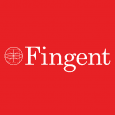Top Web Design Companies in White Plains
Searching for a Top web design company in White Plains? Look at Top website designer lists with reviews that provide the Top business web designs services for your Agencies in White Plains. The industry Top rated web design companies in White Plains leverage the latest technologies to offer amazing website designing and development services to their clients. So, it is vital for quality web design service seekers hire only Top web designers for their web projects. BusinessFirms has prepared a list of Top web design Agencies in White Plains to help prospects in their quest. These industry experts work with exceptional speed and precision to deliver incredible custom website design & development solutions. Look for a Top web design company in White Plains from the following list to have an intuitive & responsive UI/UX design for your website.
2 Companies
Grey Chain is a specialised mobile app and web development firm with expertise in UI/UX, Agile & Devops based delivery. We partner with our clients throughout the product lifecycle from ideation to delivery of efficient and cost effective solutions. Our core expertise is focussed on Mobile First, Cloud Native, Agile & DevOps.
<$25/hr
10 to 49
2016
United States (USA)
Fingent is an enterprise software development company headquartered in New York, with offices across the globe and 300+ employees. We have been a trusted technology advisor to more than 150 businesses, including start-ups, SMB's and Fortune 500 enterprises. We build cohesive technology solutions on next-generation web and mobile platforms.
$50-99/hr
250 to 999
2003
United States (USA)

